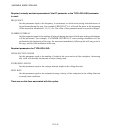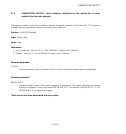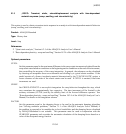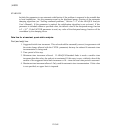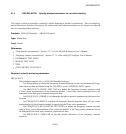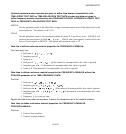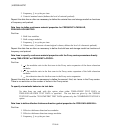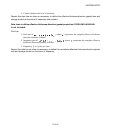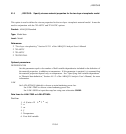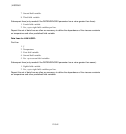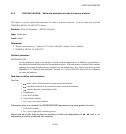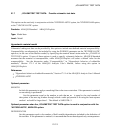
*
VISCOELASTIC
3. Frequency, f, in cycles per time.
4. Uniaxial nominal strain (defines the level of uniaxial preload).
Repeat this data line as often as necessar y to define the uniaxial loss and storage moduli as functions
of frequency and preload.
Data lines to define continuum material properties for FREQUENCY=TABULAR,
PRELOAD=VOLUMETRIC:
First line:
1. Bulk loss modulus.
2. Bulk storage modulus.
3. Frequency, f, in cycles per time.
4. Volume ratio, J (current volume/original volume; defines the level of volumetric preload).
Repeat this data line as often as necessary to define the bu lk loss and storage moduli as functions of
frequency and preload.
Data lines to specify continuum material properties w ith the Prony series parameters directly
using TIME=PRONY or FREQUENCY=PRONY:
First line:
1. , the modulus ratio in the first term in the Prony series expansion of the shear relaxation
modulus.
2.
, the modulus ratio in the first term in the Prony series expansion of the bulk relaxation
modulus.
3.
, the relaxation time for the first term in the Prony series expansion.
Repeat this data line as often as necessary to define the second, third, etc. terms in the Prony series.
There is no restriction on the number of terms in the Prony series.
To specify viscoelastic behavior via test data:
No data lines are used with this option when either TIME=CREEP TEST D ATA or
TIME=RELAXATION TEST DATA is specified. The test data are given by the
*
SHEAR
TEST DATA and the
*
VOLUMETRIC TEST DATA options or by the
*
COMBINED TEST DATA
option.
Data lines to define effective thickness-direction gasket properties for PRELOAD=UNIAXIAL:
First line:
1. Effective thickness-direction loss modulus.
2. Effective thickness-directio n storage modulus.
3. Frequency, f, in cycles per time.
21.4–4
ABAQUS Version 6.1 Module:
ID:
Printed on:



